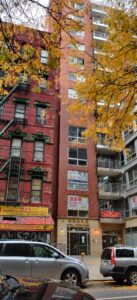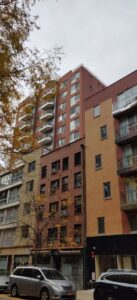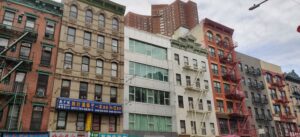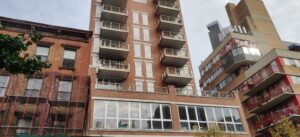Field Observation: Is Chinatown Gentrifying?
Gentrification is known as the process in which a neighborhood is enhanced through the action of producers and consumers which typically displaces the original tenants in the neighborhood. Two popular theories argues that either the supply created by real estate investors or the demand by consumers (such as families and entrepreneurs) is the driving force of gentrification. When in reality, these two theories merge together to illustrate the full picture of gentrification. Harlem is a prime example of a place where gentrification is occurring. Known as the black capital of America, over the past decade there has been a noticeable displacement of the black community following the developments that have taken place there. Chinatown is a similar neighborhood to Harlem in which it houses a large portion of lower income families, mostly of Chinese descent, and is being displaced. When observing the physical landscape of the neighborhood, it can be inferred that Chinatown, like Harlem, is indeed gentrifying and is gentrifying in similar and different ways.
When looking at Chinatown’s landscape in comparison to Harlem’s, there are many similar indicators of gentrification. First, both areas have mass transit systems that connect to wealthier areas. Harlem with its train system can connect to midtown Manhattan easily and Chinatown is on top of TriBeCa and the Financial District and has many trains along Canal Street. There is a consumer demand for a location that can connect to the rest of Manhattan and to areas with high economic activity, because there has been an increase in white collared jobs over the past years. Inevitably, neighborhoods connecting to these white collared workplaces will cater to the workers’ wants in a neighborhood. Thus, leading to the increase of luxury condominiums. Similar to Harlem, Chinatown has seen an increase in luxury buildings with high rent prices. It is often easy to spot them because their architectural design contrasts with the older tenement buildings. The modern, mostly glass buildings with balconies are typically adjacent to brick, spiraled design buildings with fire escapes instead. The One Manhattan Square building is a good example of how noticeable gentrification is in Chinatown. Compared to other buildings, this condominium towers above the affordable housing it is next to. It was originally built over a Pathmark and the prices for one condo can go over 1 million dollars. This illustrates Smith’s rent gap theory because real estate investors were able to create a development for more profit. While not all condominiums stick out like the One Manhattan Square, the other condos do provide a sharp contrast to affordable housing in the area which makes them easy to spot.
Unlike Harlem, there is not that big of an increase in chain stores because there is a consumer demand for Chinese restaurants already. Trendy restaurants often have Asian characteristics to them in Chinatown. But because of this want for Asian culture combined with the luxury buildings arising in the area, it can be said from observing Chinatown, that the area is gentrifying. The consumer demand for the culture and the ability to create developments of the land to cater housing to wealthier individuals is what will lead to the displacement of the low income Chinese residents that have given the neighborhood its unique characteristic, similar to Harlem.







